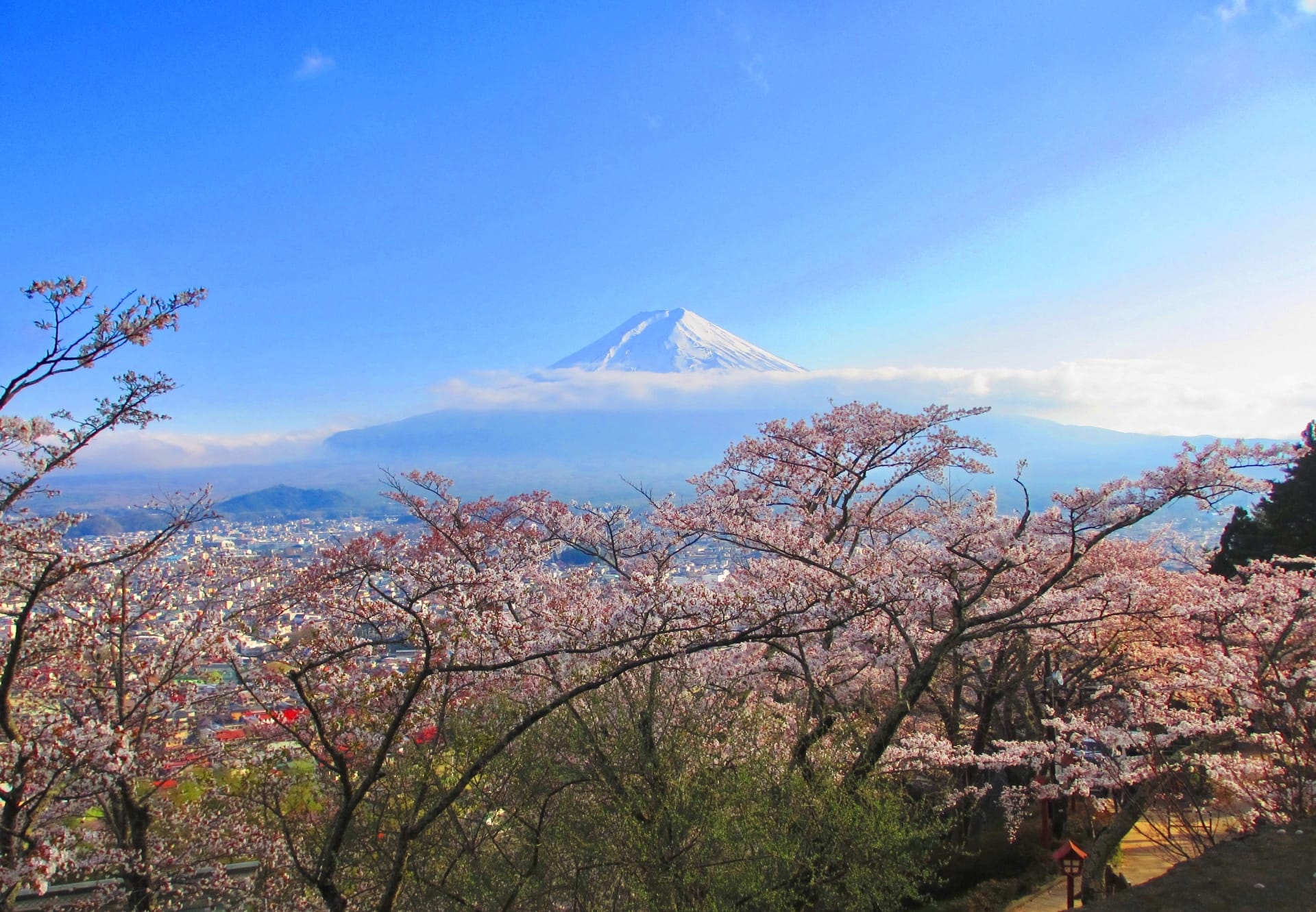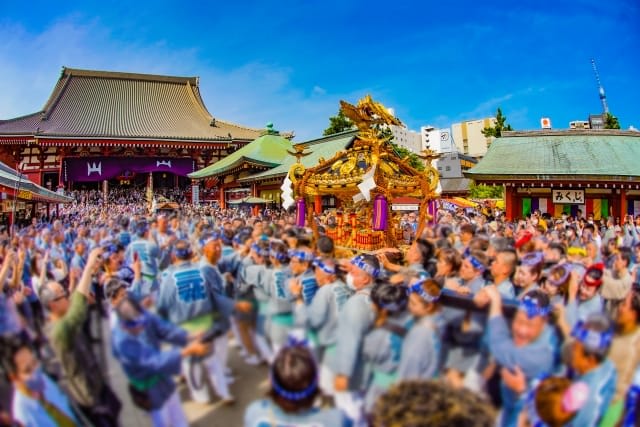Mt. Fuji Through the Seasons: Complete Guide for Foreign Visitors 2026
Due to Mount Fuji's massive size and the scattered tourist spots around its base, planning an efficient itinerary can be quite challenging for visitors. I remember when I first visited the Mount Fuji area, I wasn't able to efficiently visit the surrounding attractions, which left me feeling like I hadn't fully experienced what the region had to offer.
As a result, tours that offer an efficient and immersive way to experience the Mount Fuji area are gaining popularity. Private tours led by guides who know the Mount Fuji region inside and out are especially in demand, as they're known for allowing small groups to fully enjoy both the cultural and natural attractions around the mountain.
Magical Trip, which boasts having the #1 rated tour of 2024, launched a new tour in November 2024 called "Mt. Fuji Full-day Nature Guided Tour with a Private Chartered Car." On this tour, a driver and an expert local guide take you to carefully selected must-see spots around Mt. Fuji while explaining the local culture and traditions.

Since the tour starts and ends at your Tokyo hotel, you can explore the Mt. Fuji area hassle-free. If you're interested in Mt. Fuji but don't have time for an extended stay in the area, consider this efficient sightseeing tour.
Introduction
I've been captivated by Mt. Fuji for 10 years. This mountain has an endless array of seasonal expressions.
Mt. Fuji, a World Heritage site, certainly attracts popularity as a tourist destination. To be honest, there are some concerns like peak-time crowds and high prices for meals. Depending on the weather, its graceful figure might be hidden by clouds.
But Mt. Fuji has a series of breathtaking experiences waiting that make you forget such minor worries. What I particularly love is the spring scenery where the snow-capped peak harmonizes with fully bloomed cherry blossoms. The inverted reflection of Mt. Fuji at dawn by Lake Kawaguchi still makes my heart tremble.
Summer climbing was indeed tough, but the joy of seeing the sunrise is an unforgettable memory. Autumn is vivid with the contrast of fall colors and blue sky, and winter offers blissful moments of hot springs while gazing at snowy landscapes.
In this article, I'll share the charms of Mt. Fuji that I've discovered over 10 years, season by season. I'll guide you to experience the best views of Mt. Fuji that everyone wants to see at least once, including enjoyable activities that I've actually experienced and thought, "That was great!"
Table of Contents
・When is the Best Season to Visit Mt. Fuji?
・The Charms of Mt. Fuji in Spring
・Enjoying Mt. Fuji in Summer
・Savoring Mt. Fuji in Autumn
・The Appeal of Mt. Fuji Area in Winter
・How to Access Mt. Fuji from Tokyo
・Frequently Asked Questions
When is the Best Season to Visit Mt. Fuji?
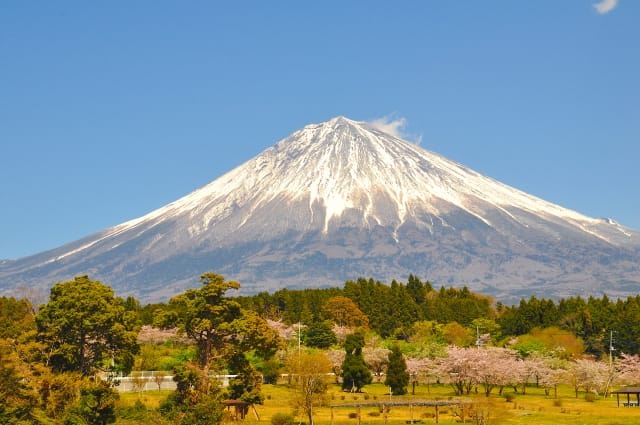
Mt. Fuji shows various expressions throughout the year, but I recommend choosing the optimal time based on your purpose. From my 10 years of experience, I'll introduce the characteristics and charms of each season.
First, late March to mid-April is a special time when you can enjoy the uniquely Japanese scenery of cherry blossoms and snow-capped Mt. Fuji. This is my favorite season, and the beauty during sunrise and sunset is particularly breathtaking.
Summer, from July to early September, is the official Mt. Fuji climbing season. During this time, mountain huts are open, and climate conditions are optimal for climbing. However, it's especially crowded during the Obon holiday period in August, so I recommend the periods before or after.
For those who want to enjoy autumn foliage, late October to mid-November is the best season. The contrast between Mt. Fuji's majestic figure and the autumn colors provides excellent photo opportunities.
Winter, from December to February, is the time to enjoy Mt. Fuji dressed in snow. The mountain viewed through the clear air is exceptional, and the combination with hot springs is a wonderful experience.
For those who want to avoid crowds, I recommend visiting during the rainy season in June or on weekdays. Although the weather is unstable, Mt. Fuji shrouded in mist is also charming. Also, during this time, there are relatively fewer tourists, allowing you to enjoy sightseeing at a leisurely pace.
As a personal opinion, I recommend spring the most, when you can enjoy both cherry blossoms and snow-capped Mt. Fuji. Although there are temperature differences between morning and evening, the climate is ideal for sightseeing, and you can take wonderful photos at various shooting spots.
The Charms of Mt. Fuji in Spring
Spring at Mt. Fuji is a season of spectacular views created by the snow-capped peak and blooming cherry blossoms. It's also the season where I've spent the most time over the past 10 years, and I'd like to fully convey its charm.
More Details About This Season:
Mount Fuji in Spring: Complete Guide to Cherry Blossoms, Events & Activities 2026
Cherry Blossom Spots and Best Viewing Times
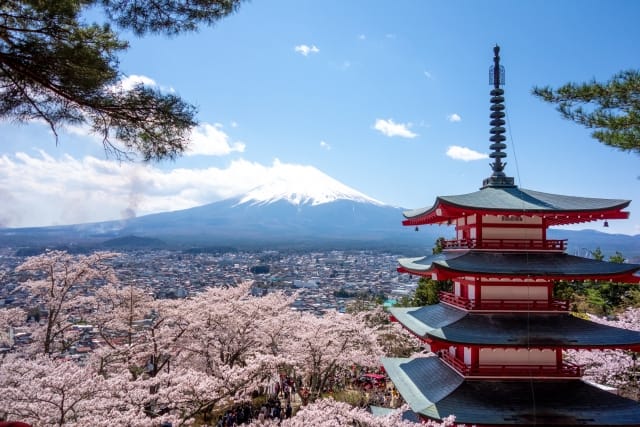
There are numerous spectacular cherry blossom spots around Mt. Fuji. Among them, Arakurayama Sengen Park is a special place I visit every year without fail. Although you need to climb about 400 steps, a perfect composition of a five-storied pagoda, cherry blossoms, and Mt. Fuji awaits at the top. The early morning view is breathtakingly beautiful, making it a popular spot that attracts photographers from all over the world.
Along Lake Kawaguchi, there's a cherry blossom avenue of 400 to 500 trees, and the scenery of the inverted reflection of Mt. Fuji and cherry blossoms on the lake surface is stunning. My favorite shooting point is the view from the north shore of the lake. At night, the cherry blossom avenue is illuminated, offering a fantastical atmosphere different from daytime.
Oishi Park is a place where you can enjoy the collaboration of Mt. Fuji not only with cherry blossoms but also with spring flowers like tulips and nemophila that bloom one after another. While strolling through the park, you can view Mt. Fuji from various angles, showing different expressions depending on the type of flowers.
Oshino Hakkai is a mystical spot where eight ponds created by Mt. Fuji's spring water harmonize with cherry blossom avenues. The reflection of cherry blossoms in the highly transparent water is as beautiful as a watercolor painting. If you visit early in the morning, you can have this fantastical landscape all to yourself with few tourists around.
Events to Enjoy Spring Flowers
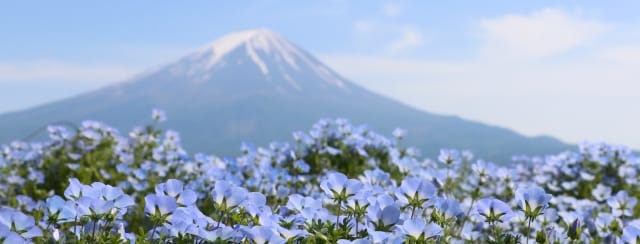
The reason I started visiting Mt. Fuji was actually the Fuji Shibazakura Festival that I attended 10 years ago. I still vividly remember the excitement when I saw the scenery of about 500,000 moss phlox in full bloom. The carpet of moss phlox spreading from light purple to deep pink, like a gradient, is truly spectacular.
The nemophila field by Lake Kawaguchi is also one of my favorite spots. The best moment I experienced here was a scene I accidentally encountered at dusk. It was a windy day, and the blue nemophila flowers were swaying like waves while Mt. Fuji, illuminated by the setting sun, was gradually turning red. It was a beauty that could never be fully captured by a camera, but the emotion of that moment is what draws me back to this place every year.
Spring Activities
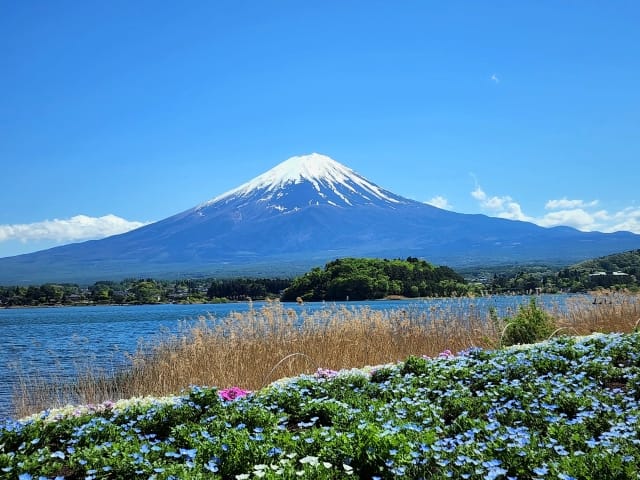
Around Mt. Fuji in spring, you can enjoy various outdoor activities. I have a particular attachment to the picnic experience at Lake Kawaguchi. I still vividly remember the memory of cherry blossom viewing with a lunch box I bought from a local bento shop when I first visited 10 years ago. The time spent leisurely picnicking under the cherry blossom avenue by the lake is a special moment that makes you forget the hustle and bustle of the city.
Cycling around the Five Lakes is also one of the best ways to enjoy Mt. Fuji in spring. Every year, I enjoy the spectacular view of Mt. Fuji while feeling the spring breeze on the cycling road around Lake Kawaguchi. Particularly memorable was the early morning cycling I experienced last spring. The scenery of Mt. Fuji and the cherry blossom avenue gradually appearing through the morning mist was indescribably beautiful.
Trekking in the fresh green forest is also one of my favorite activities. The walking trails in Aokigahara Jukai Forest sprout new leaves in spring, enveloping you in fresh air and bird songs. For the past few years, I've been trying different trekking courses every year, and each course offers a view of Mt. Fuji's majestic figure, with new discoveries each time.
Enjoying Mt. Fuji in Summer
Summer at Mt. Fuji reaches the peak of the climbing season, with many people aiming for the summit. But that's not all. The area around Mt. Fuji becomes a place where you can enjoy various activities, bustling with summer festivals, fireworks displays, and leisure facilities visited by people seeking coolness.
I'll share the charms of Mt. Fuji in summer that I've experienced over the past 10 years.
More Details About This Season:
Explore Mt. Fuji in Summer: A Complete Guide for Foreign Visitors
Climbing Mt. Fuji
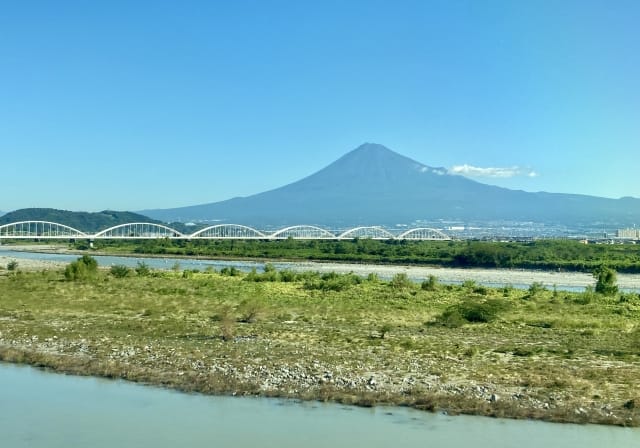
From my own experience, I strongly feel that climbing Mt. Fuji is an activity that should never be taken lightly. When I first attempted it, I thought I was sufficiently prepared, but I still suffered from altitude sickness and almost gave up halfway. However, when I achieved my revenge climb and saw the sunrise, the emotion I felt is still unforgettable.
The Yoshida Trail is the most recommended course for beginners. It's well-equipped with mountain huts, and first aid stations are set up at various points, allowing for a safe climb. It takes about 6 hours from the 5th station to the summit, but I recommend climbing slowly while taking breaks at the mountain huts along the way.
The other routes - Subashiri, Gotemba, and Fujinomiya - each have their own characteristics and are suitable for experienced climbers. The Gotemba route, in particular, is attractive for its "sand run" descent, but it's physically quite challenging.
As a note of caution, "bullet climbing" (day trips) is prohibited. This is not just a rule, but an absolute must for safety management. I once considered attempting a day trip, but after receiving advice from an experienced person, I refrained from doing so.
Regarding climbing equipment, perfect preparation is necessary. Warm clothing is essential, as temperatures can drop below freezing near the summit even in summer. Always bring rain gear. On my first climb, I carelessly brought cheap rain gear, which was completely useless in the strong winds halfway up, leading to a difficult experience. A headlamp is indispensable for night climbing, and spare batteries are necessary.
Summer Festivals and Fireworks Displays
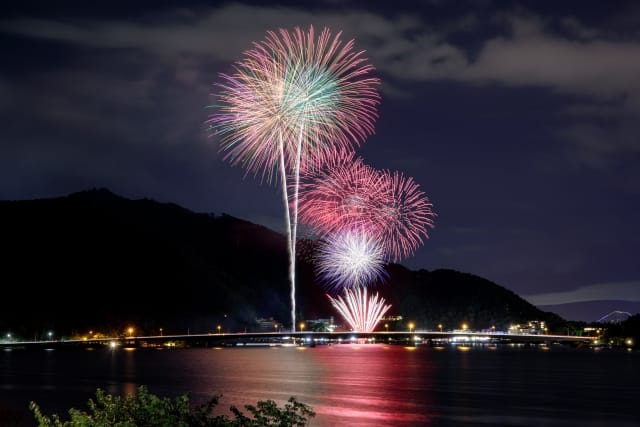
The summer festivals and fireworks displays around Mt. Fuji are one of my annual pleasures. Especially, the Lake Kawaguchi Opening Festival Fireworks Display is a grand event where about 2,000 fireworks color the night sky. I still can't forget the impact of the first time I participated. The scenery of fireworks reflected on the lake surface and the silhouette of Mt. Fuji was nothing short of spectacular.
The Lake Yamanaka Hokko Festival is a fireworks display that overwhelms with its scale. About 10,000 fireworks are launched, and the entire lake surface is colorfully decorated with launches from multiple locations. Last year, I was able to leisurely enjoy the fireworks from a secret spot taught to me by a local.
The charm of this season, rich in summer festivals and fireworks displays, is that you can enjoy it until night. I try to participate in as many festivals as possible every year, but each has a different atmosphere, and there's always a fresh excitement no matter how many times I visit.
In particular, I feel that the warm hospitality of the locals and enjoying local specialty dishes sold at stalls are also big attractions of the festivals.
Summer Leisure Facilities
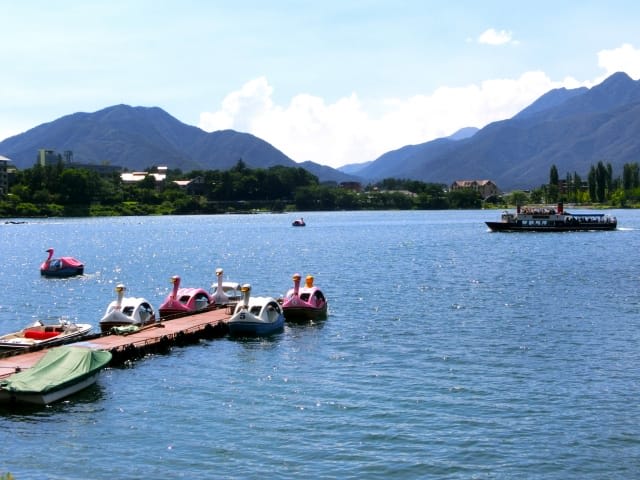
There are various leisure facilities around Mt. Fuji to enjoy summer. What particularly impressed me was at Fuji-Q Highland. I can't forget the experience of riding the world-famous roller coaster "FUJIYAMA". The luxurious experience of being able to view Mt. Fuji while riding thrilling attractions is a unique charm of this place.
Fuji Subaru Land is a facility whose charm lies in attractions that take advantage of nature. Especially in summer, water play facilities are abundant, making it enjoyable for families. I visited once before with my niece, and from a child's perspective, I realized anew the wonderfulness of facilities where you can play in nature.
At Lake Kawaguchi and Lake Yamanaka, you can experience various water activities. Canoeing and SUP are popular activities that make you forget the summer heat.
Lake Motosu Campground is located in an excellent location overlooking Mt. Fuji. I enjoy summer camping with friends every year, but when night falls, a sky full of stars spreads out, offering a view that you can never see in the city.
You can spend a luxurious time enjoying barbecue while gazing at Mt. Fuji, and stargazing at night. Especially, the silhouette of Mt. Fuji seen on a full moon night is mystical, with a beauty that can't be captured by a camera.
Savoring Mt. Fuji in Autumn
Mt. Fuji in autumn is beautiful in harmony with the autumn foliage, making it the perfect season for photography. I'll introduce the scenic spots and their charms that I've seen over the past 10 years. This season has large temperature differences between morning and evening, and the figure of Mt. Fuji often appears more clearly.
More Details About This Season:
Autumn at Mt. Fuji: A Complete Guide for Foreign Visitors
Autumn Foliage Spots
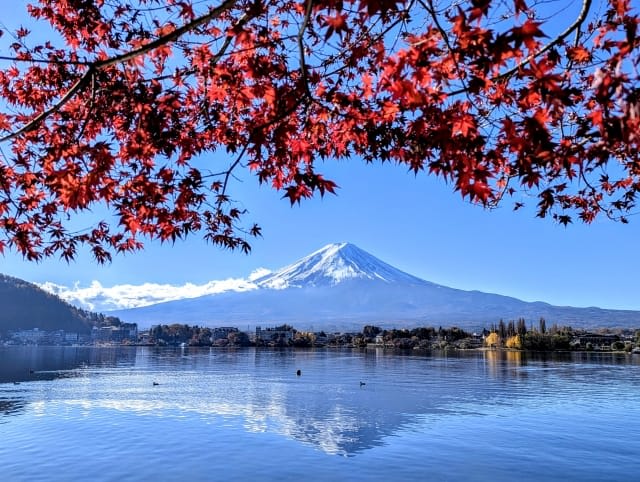
The Maple Corridor at Lake Kawaguchi is my autumn staple spot. The colorful avenue created by about 70 maple trees is breathtaking, and the night illumination creates a fantastical atmosphere. What I like most is visiting at dusk. The moment when the autumn leaves shine in the western sun and the silhouette of Mt. Fuji emerges is something I can't help but capture on camera every year.
The experience at Lake Motosu is the origin of my autumn foliage photography. The competition between the inverted reflection of Mt. Fuji on the water surface and the autumn foliage is a popular subject among photography enthusiasts. The scenery seen in the early morning stillness is especially exceptional, and on days when the lake surface is as still as a mirror, you can capture a perfect inverted Mt. Fuji.
Iyashi no Sato Nenba at Lake Saiko is a place where you can experience the original landscape of Japan. The scenery of thatched-roof old houses and autumn foliage creates an atmosphere like a movie set.
Autumn Fruit Picking

Grape picking at the foot of Mt. Fuji is one of the pleasures of autumn. Especially, Koshu grapes are a special variety nurtured by the climate of this region. I first experienced grape picking 7 years ago, and I still can't forget the sweet and juicy taste. The way to identify fully ripe grapes that the vineyard owner taught me remains important knowledge even now.
Apple picking is also an autumn tradition at the foot of Mt. Fuji. Apples grown in high-altitude places have a special flavor with high sugar content thanks to the temperature difference. At the orchard I visit every year, you can enjoy different varieties depending on the time, such as Shinano Sweet, Fuji, and Orin.
The Appeal of Mt. Fuji Area in Winter
Mt. Fuji in winter is beautiful with its snow-capped appearance, and you can enjoy it differently from summer. I'll introduce the charms of Mt. Fuji enveloped in silence that I've experienced and the activities unique to this season.
More Details About This Season:
A Guide to Enjoying Mt. Fuji in Winter for Foreign Tourists 2026 w/map
Winter Events
In winter, many fantastic events are held around Mt. Fuji. What particularly moved me was the Lake Kawaguchi Winter Fireworks. This event, held mainly on weekends from mid-January to late February, features a stunning contrast of snowy scenery and fireworks. The fireworks I saw three years ago in minus 5 degrees Celsius were so moving that I forgot about the cold.
The Lake Saiko Icicle Festival is also a wonderful event where you can enjoy art created by nature. The icicles formed during the severe winter period create a fantastical world when illuminated. Two years ago, I enjoyed taking photos with a photographer friend, and I still vividly remember the scenery from that time.
Winter Sports
Source: Google Map
Fujiten Snow Resort is a place I always visit every winter. Seven courses are available for everyone from beginners to advanced skiers, and you can enjoy skiing according to your level. What I particularly like is the course where you can ski while overlooking Mt. Fuji. The combination of snowy scenery and Mt. Fuji on a clear day is truly spectacular.
The kids' park is also well-equipped, and my nieces look forward to it every year. Since you can start with snow play and simple sledding, even children who are new to skiing or snowboarding can enjoy it with peace of mind.
A family-oriented sledding slope is also available. When I visited with a friend's family, I enjoyed sledding for the first time in a while, and both adults and children could purely enjoy the fun of playing in the snow.
The abundance of rental equipment is also a big attraction of this resort. You can visit easily without bringing anything, and you can get everything from wear to ski equipment. When I first visited, I was able to rent all the equipment, which was very convenient.
Website: https://www.fujiten.net/
Hot Springs and Winter Cuisine
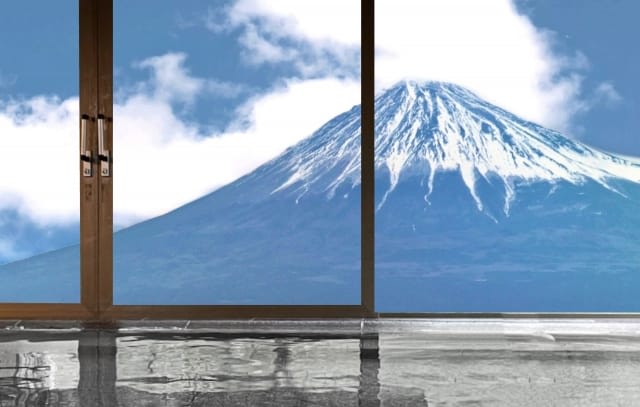
An open-air bath with a view of Mt. Fuji is the highlight of winter. My favorite is the hot spring experience while gazing at snow-covered Mt. Fuji. Especially at dusk, there's a moment when the sky turns red and the silhouette of Mt. Fuji emerges. The experience of entering an open-air bath during the severe winter four years ago is still an unforgettable memory.
In the Lake Kawaguchi hot spring area, each facility offers snow-viewing hot springs limited to the winter season. What I particularly like is a long-established inn where you can enjoy kaiseki cuisine using local ingredients. You can savor seasonal tastes such as tempura of mountain vegetables and simmered local fish.
Hoto noodles are a local dish representing Yamanashi Prefecture. I still can't forget the shock when I first ate it. The texture of thick noodles entangled in a warm miso-flavored soup full of vegetables is perfect for cold winters.
Yoshida udon is a specialty of Fujiyoshida City. The unique chewy noodles and warm broth warm up the body in cold winter.
Wines and local sake from Yamanashi Prefecture are also essential winter flavors. Especially, local sake enjoyed with warm hot pot dishes is exceptional. Local izakayas also offer seasonal warm sake menus, allowing you to enjoy a drink that warms you from the core on cold nights.
How to Access Mt. Fuji from Tokyo
When planning a trip to Mt. Fuji, choosing the access method is an important point. From my 10 years of experience, I'll introduce the optimal access methods according to the season and purpose.
More Details About This Season:
Mt. Fuji Access and Transportation Guide: How to Travel to Mt. Fuji from Tokyo
Access by Train
When using the Fuji Kyuko Line from Tokyo Station, you can reach Kawaguchiko Station in about 2 hours. My favorite is the limited express train where you can enjoy the window view. The moment Mt. Fuji starts to appear always makes my heart leap.
From Shinjuku, there's a convenient direct train called "Fuji Meguri" that reaches Kawaguchiko in about 2 hours. The seats are comfortable, and tourist information is abundant. I often use the morning service, and the scenery of Mt. Fuji appearing in the morning mist is exceptional.
When using the Shinkansen from Tokyo Station, there's also a route where you get off at Mishima Station and then take a bus to Kawaguchiko. It takes about 2 hours and 30 minutes in total, but the view of Mt. Fuji from the Shinkansen is impressive and worth the trip in itself.
IC cards (like Suica or PASMO) are essential for smooth travel. You can move smartly without taking time to purchase tickets. They're especially useful when you're in a hurry or using multiple transportation methods.
Access by Bus
Using a highway bus from Shinjuku Station, you can reach Kawaguchiko Station in about 2 hours.
Most buses require reservations, so advance booking is essential. From my experience, I recommend early reservations, especially on weekends and holidays. I once had trouble trying to go without a reservation during the autumn foliage season.
The big attraction of the bus is that you can enjoy Mt. Fuji and autumn foliage from the window. The view of Mt. Fuji from the highway has a different charm from the train. On clear days, you can view the entire figure of Mt. Fuji and enjoy the scenery that changes with the seasons.
Frequently Asked Questions
I'll answer frequently asked questions from foreign travelers, incorporating my experiences.
What Should I Wear in Each Season?
From my 10 years of experience, I'll tell you the optimal clothing for each season. In spring, as temperature changes are significant, I recommend clothing based on a light jacket and long sleeves that allow for layering. I struggled with the cold when I first visited, so warm outerwear is necessary, especially in the morning and evening.
In summer, light clothing is generally fine, but there can be sudden temperature drops in high-altitude areas. I've experienced shivering at the 5th station of Mt. Fuji even in midsummer, so I always recommend bringing warm clothing.
Autumn is the season when fleece or light down jackets are useful. Gloves and scarves are also reassuring. I often go out for autumn foliage photography, but warm clothing is essential, especially in the early morning when it's particularly cold.
In winter, proper warm clothing and waterproof shoes are necessary. On my first winter visit, I regretted walking around in the snow with shoes of low water resistance. A full set of winter accessories including gloves, scarf, and earmuffs is also essential.
Something to be careful about year-round is sun protection. The area around Mt. Fuji is at high altitude, so UV rays are strong. I've had the experience of getting sunburnt by being careless, so I consider hats and sunglasses as must-have items.
Can I Enjoy It with Children?
Regarding sightseeing with children, I'll answer based on my experience of visiting with my nieces. Fuji-Q Highland has plenty of attractions for children, and even small children can enjoy it sufficiently. My niece was very excited about meeting Thomas the Tank Engine.
Fuji Subaru Land is ideal as a nature experience playground. The children of my friend's family that I guided were absorbed in playing in nature.
The Lake Kawaguchi sightseeing boat is one of the activities that families can easily enjoy. It doesn't sway much, so children can comfortably enjoy the boat trip. In my experience, the duration of about 30 minutes is just right for children.
Seasonal festivals and events also have plenty of content that children can enjoy. Summer festivals, in particular, are full of elements that children love, such as food stalls and fireworks.
However, climbing Mt. Fuji with children below elementary school age should be avoided. I don't recommend it due to the risk of altitude sickness and physical dangers. Instead, I recommend driving up to the 5th station or sightseeing by ropeway.
Mt. Fuji is a special place with different charms in each of the four seasons. Through my 10 years of experience, I've realized the depth of its charm. The Mt. Fuji area, where there are new discoveries every time you visit, including seasonal highlights, activities, and gourmet food, never gets boring no matter how many times you visit.
I hope the information introduced in this article will be helpful for your Mt. Fuji sightseeing. Please enjoy the charms of Mt. Fuji to the fullest with ways of enjoying it suited to each season. I also want to continue visiting Mt. Fuji and discovering new charms!
